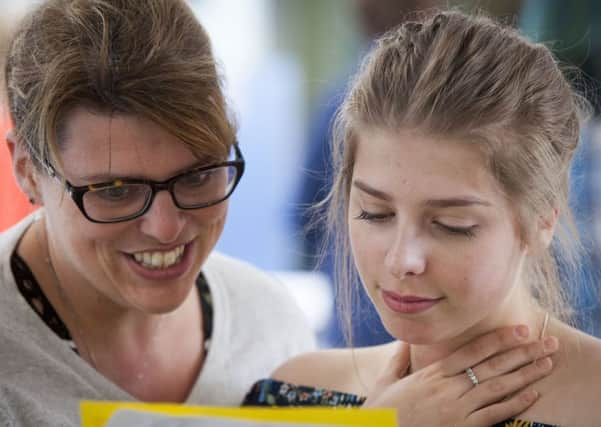Find out how your secondary school performed


This is the first year the government has used a new measure - known as Progress 8 - to judge how schools are performing.
Progress 8 aims to measure how well pupils progressed between the end of primary school and the end of secondary school, compared to pupils in other schools who got similar results at the end of primary school. It is measured with the higher the score the better between 1 and -1 with 0 being the national average.
Advertisement
Hide AdAdvertisement
Hide AdScalby School was the highest ranked school in Scarborough with a rating of 0.15 followed by St Augustine’s on 0.09.
David Read, headteacher at Scalby School, said: “Scalby’s results place the school in the top 20 per cent of schools in England with us achieving above the national average on all key measures. We are naturally delighted with these results which bear testimony to the hard work of the students, the strong support of parents and the talent and commitment of the staff.”
Ryedale School (0.43), Malton School (0.16) and Lady Lumley’s (0.06) were all above the national average.
On the other hand, George Pindar (-0.26) and Ebor Academy Filey (-0.46) both scored below average with Scarborough’s biggest school Graham, receiving a well below average score of -0.46.
Advertisement
Hide AdAdvertisement
Hide AdThe Department for Education data for 2015-16 also includes for the first time a related measure called Attainment 8.
This measures the achievement of a pupil across eight qualifications: Mathematics (double weighted), English (double weighted), three English Baccalaureate (EBacc) subjects and three other subjects.
In North Yorkshire’s case, this was 51.6 which was above the national average of 48.2 with only Graham School, Ebor Academy Filey and George Pindar failing to reach that target.
Andrew Galbraith, headteacher of Ebor Academy Filey, said: “The students in Year 11 didn’t get the best start with the school being in very difficult circumstances for four years those students were at the school. However, progress increased rapidly last year and the school is now above the government floor target.”
Advertisement
Hide AdAdvertisement
Hide AdAt St Augustine’s RC School, 68 per cent of pupils achieved A*-C grades in English and Mathematics while Scalby School’s cohort of 2016 had 64 per cent achieving the standard.
Mark Taylor, headteacher at St Augustine’s RC School, said: “It’s great that results were even better this year than last, and that our most academically able pupils achieved some spectacular successes, but we are equally proud of our less able pupils who made good progress.”
Ryedale School (71 per cent), Malton School and Lady Lumley’s (both 70 per cent) earned scores above the 67 per cent county average and 58.7 per cent national average.
Mark McCandless, headteacher of Ryedale School, said: “Our Progress 8 score places us within the top 10 per cent of schools in the country. We are very proud of the significant achievements of our students and the hard work and dedication of our talented staff.
Advertisement
Hide AdAdvertisement
Hide Ad“Ryedale School will strive to continue to deliver the best educational provision we can so that our students continue to achieve outcomes in line with their potential.”
The final league tables will be released in January 2017, and will take account of the results of exam appeals.
George Pindar and Graham School did not provide a statement before going to print.